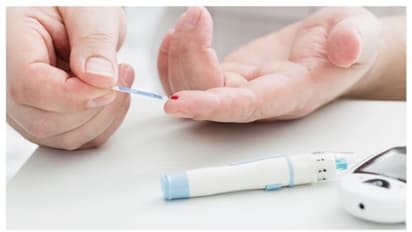What is Type 1.5 Diabetes? Symptoms, causes, and effective treatment options

Synopsis
Type 1.5 diabetes, or Latent Autoimmune Diabetes in Adults (LADA), blends features of both type 1 and type 2 diabetes, presenting with varied symptoms and requiring insulin therapy.
Globally, the number of diabetes cases is increasing due to changes in lifestyle and a rise in obesity. As part of this expanding tendency, Type 1.5 diabetes, also known as Latent Autoimmune Diabetes in Adults (LADA), is one such instance.
LADA
Adults with latent autoimmune diabetes (LAD) experience symptoms and traits similar to those of both type 1 and type 2 diabetes. Experts in medicine claim that LADA is diagnosed in maturity and advances gradually, much like type 2 diabetes. But unlike type 2 diabetes, LADA is an autoimmune disease that is unaffected by dietary and lifestyle modifications.
Symptoms
The early warning signs and symptoms of Type 1.5 diabetes, according to experts, might be very ambiguous but may include:
1. Constant thirst
2. Frequent urination
3. Inexplicable weight loss
4. Blurred vision and nerve tingling
Treatment
According to medical professionals, insufficient insulin production by the body leads to Type 1.5 diabetes. Oral drugs may be helpful in the beginning for type 2 diabetes because of its slow development. However, within five years after diagnosis, persons with LADA frequently need insulin. The best course of action for Type 1.5 diabetes is usually insulin therapy, though daily dosage adjustments may be necessary.
Explore the latest Lifestyle News covering fashion, wellness, travel, Food and Recipes, and more. Stay updated with trending Health News, fitness tips, and expert insights to inspire your daily living. Discover personalized lifestyle trends that keep you stylish and informed. Download the Asianet News Official App from the Android Play Store and iPhone App Store for everything that adds value to your everyday life.